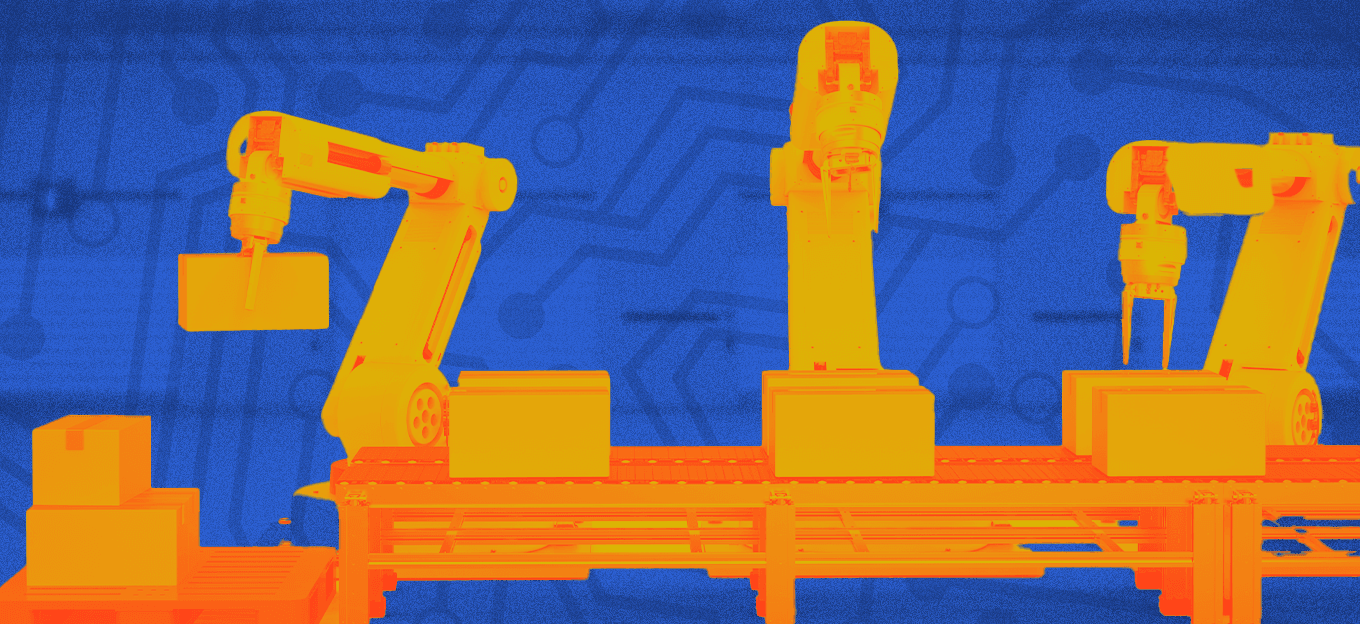How IoT is Changing the Face of Factories Worldwide
How IoT is Changing the Face of Factories Worldwide
- Last Updated: December 2, 2024
IoT For All
- Last Updated: December 2, 2024



Factories are rife with automation, and it’s no surprise—in factories, even the smallest productivity gains have a substantial scaling factor. As industrial efficiencies, cost-saving measures, and new technologies are uncovered, factories are an understandable test bed for innovation.
Factory automation is generating valuable data around processes allowing IoT systems to improve processes intelligently and sustainably quickly.
So it should come as no surprise that IoT, the next stage of digital transformation, has a range of applications in factory automation. These applications represent a subset of industrial Internet of Things (IIoT) Applications. Effective IoT rollouts start with reliable data collection and storage. Beyond this, the depth of opportunity with IoT goes only as far as one’s imagination.
Gathering Data and Unlocking Applications
There are countless Applications for well-employed IoT technology in a factory setting. Here are a few templates:
- Remote monitoring of system health
- Asset tracking
- Process lifecycle tracking
- Cold chain management
- Patient safety tracking
Regardless of the Applications, everything starts with data collection and storage. IoT deployments often begin with one end in mind but expand into other applications; after getting sensors out into the field (the factory) and gathering data, new possibilities emerge for what to do with that data.
On top of baseline tracking and monitoring capabilities, machine learning and other analytics approaches can be layered to maximize and make sense of the information communicated by the sensors. Start with data, then move onto storytelling to extract what is meaningful.
Efficiency and Productivity Gains
The most top-of-mind wins for IoT in the factory are likely centered around productivity gains. Increased mechanization and automation of physical processes can help organizations build more things with higher quality more quickly.
For example, IoT can enable the remote access and operation of devices that handle materials in an assembly line. IoT systems can utilize advanced robotics technology to speed up assembly line operations, standardize component creation, reduce product errors, reduce product waste, and automate QA processes.
Improving Inventory Management
Remote monitoring of factory equipment and processes can generate data to enable deeper insights into procurement and planning. By conducting fill-level monitoring of a given material, an IoT system can notify employees when a material needs to be replenished. What’s more, it can monitor supply over the course of months to identify how often the material needs to be replenished given a number of different factors. It can proactively signal to employees when material supply orders need to be made—reducing unnecessary costs and optimizing inventory procurement.
If there are pieces of equipment that are shared within a facility (or between facilities), an IoT system can use data to suggest where and when the equipment should be moved. If the facility experiences high utilization of one equipment type on Wednesday mornings, the IoT system can analyze a number of factors and suggest the quantity and type of equipment that needs to be redistributed Tuesday afternoon to optimize inventory usage and availability.
What’s more, by collecting data on the usage patterns of individual pieces of equipment, an IoT system can suggest when equipment should be preventatively maintained. Tight integrations with specific equipment types can even enable IoT systems to detect errors in equipment, flagging issues early and reporting the precise source of the errors. This can be a tremendous time saver, enabling factory administration to get more use out of equipment and improve the safety of those operating the equipment.
Improving Maintenance of Factory Facilities
Facility maintenance is a perhaps underrated area for factory innovation. An IoT system that monitors the temperature, humidity, and power usage of HVAC systems within a factory facility can lead to significant cost savings and energy reduction. It can also detect anomalies, flag maintenance needs, and help to regulate the facility. It can also incorporate security measures into its monitoring, helping ensure peace of mind for facility operators.
Improving Employee Safety
By creating opportunities for reduced equipment faultiness, reduced product errors, and more effective process management, IoT systems can improve human safety in the factory. If there is harmful exposure in a factory, for example—such as a fire or gas hazard—an IoT system can transmit critical system information and other aiding data to ensure employees are informed and safe.
With COVID-19 sweeping the globe, employee health in the factory is top-of-mind in new ways. IoT systems can also be used to flag COVID concerns by tagging employees, detecting when folks are too close to each other, and mapping anonymized employee data with larger contact tracing efforts in the event of an outbreak. For situations where tagging individual employees isn’t an option, IoT systems can also detect congestion levels room-to-room and can issue safety warnings when there are too many people in an enclosed space.
It’s worth noting that factory automation poses questions related to labor: will increased factory automation lead to less factory jobs? It’s probable. What seems more likely, however, is that the job description of manufacturing employment will shift with deepened digital transformation. This could improve employee safety and satisfaction by shifting jobs away from tedious, repetitive, and fatiguing tasks and shifting jobs into process management or systems management territories—monitoring the systems that are doing the repetitive tasks. Time will tell how labor is redistributed in the manufacturing sector of the future.
Meeting Compliance Measures
Remote monitoring of factory facilities can help ensure that compliance KPIs are visible and accessible. By communicating these KPIs, automating reports, and flagging issues early and often, IoT systems can also aid in the satisfaction of compliance measures. Along with productivity gains, inventory optimization, reduced maintenance costs, and improved employee safety, IoT systems can bolster compliance on multiple fronts and can enable organizations to create new KPIs that weren’t previously accessible.
All of these IoT Applications are employed to reduce costs: financial, material, legal, temporal, and social. Factory automation is alive and well in this unfolding era of IoT, and for good reason. By generating valuable data around processes, IoT systems can quickly become the de facto place to start in order to improve processes intelligently and sustainably.
The Most Comprehensive IoT Newsletter for Enterprises
Showcasing the highest-quality content, resources, news, and insights from the world of the Internet of Things. Subscribe to remain informed and up-to-date.
New Podcast Episode

IoT and AI in 2026
Related Articles





